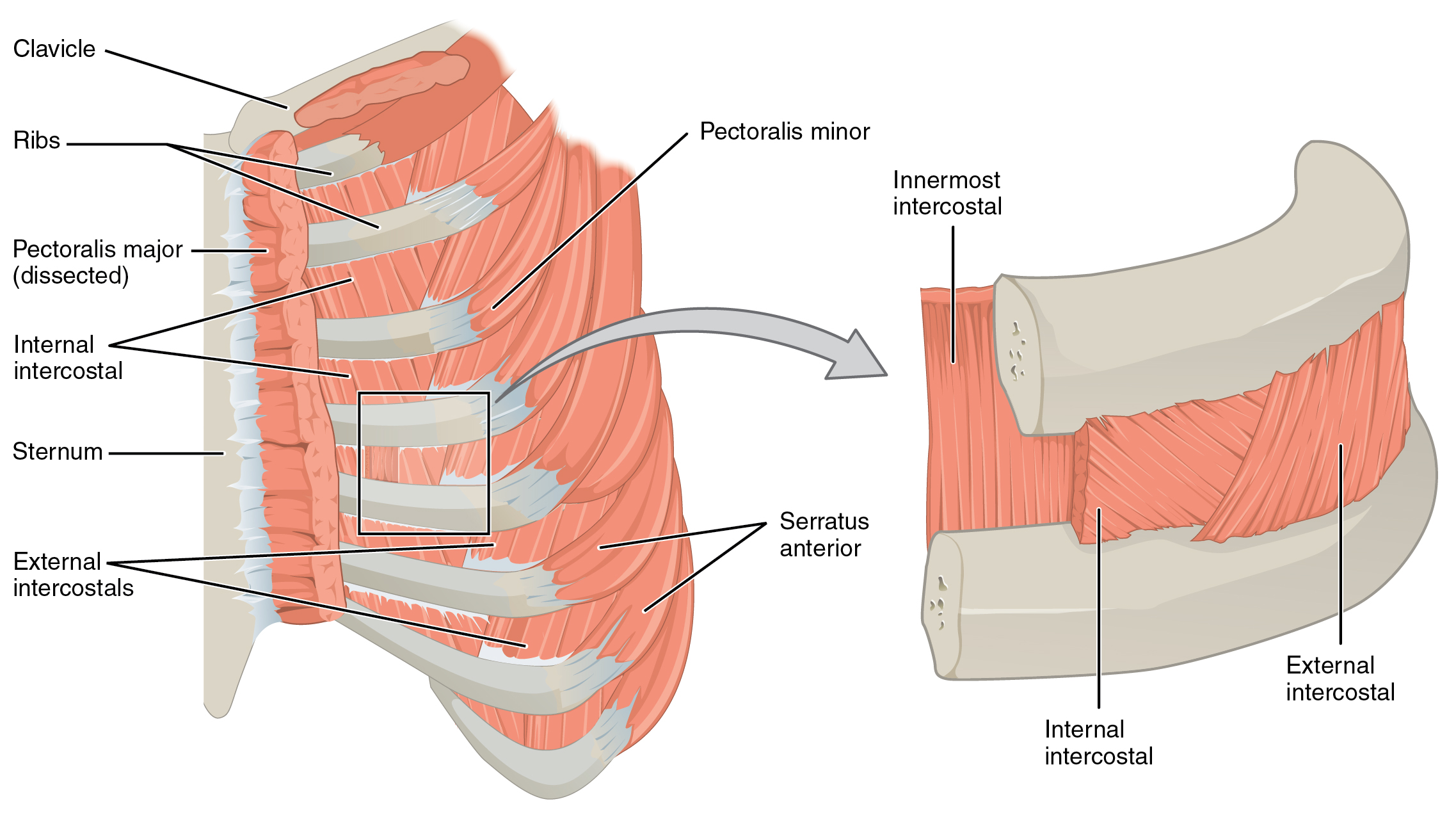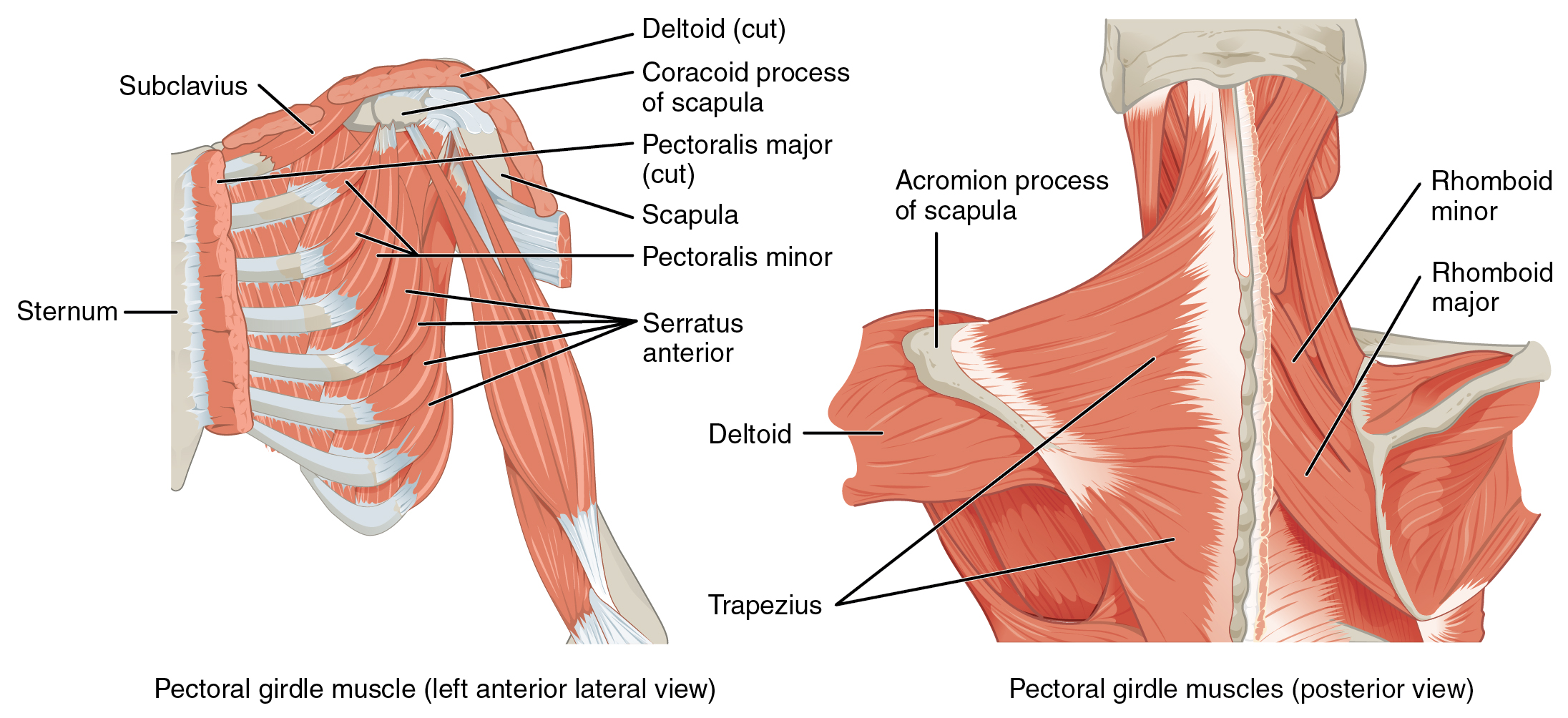Trigger points
Neuman4
MMT5
Completed
Overview
The pectoralis minor lies on the anterior aspect of the thorax, deep to the pectoralis minor7.
The pectoralis minor is a 1-joint muscle acting solely on the scapulothoracic joint whereas the pectoralis major is a 2-joint muscle acting on the GHJ and STJ.
Action
- Scapulothoracic:
- Assists in Depression6,7 resulting in the glenoid facing inferiorly7.
- Protraction6,7
- Downward rotation6
When the scapula is fixed, the pectoralis minor can act on the ribs7 and assist in respiration6
The pectoralis minor can be used as an accessory muscle of inspiration7.
Myofascial Functional Unit
The coracobrachialis and pectoralis minor both have insertions on the coracoid process, which creates a myofascial line8. When the arm is relaxed by one’s side since the pec minor and coracobrachialis fascial lines run in two different directions, thus the line is inactive8. However, when shoulder is brought into overhead flexion (i.e. tennis serve or hanging from a bar)8.
This connection will combine with other myofascial units to form the Deep front of arm line and the Deep Front Line8.
Strain-Counterstrain
“Location of Tender Point: 3 to 4 cm inferior to the coracoid process and 1 to 2 cm medial to it, where the tendon joins the muscle. May also be found in the belly of the muscle. Anatomical Correlation: As stated. Direction to Press on Tender Point: Press from anterior to posterior. Treatment Position(s): With patient supine, stand on the side opposite the Tender Point. Affected arm is adducted diagonally across the chest in the same plane as the involved muscle fibers. The arm is then tractioned caudad and medially as though in a line running through the Tender Point. Obtain more force by grasping the point of the shoulder and pulling in the same direction. Frequency of Occurrence: Common to uncommon. Clinical Correlation(s): Pain in the anterior shoulder. Associated Pain Referral Pattern: Anterior chest wall pain and inner arm and hand pain. Alternate Names/Nomenclatures: None. Explanatory Notes: None.”9
References
2.
Donnelly JM, Simons DG, eds. Travell, Simons & Simons’ Myofascial Pain and Dysfunction: The Trigger Point Manual. Third edition. Wolters Kluwer Health; 2019.
3.
Finando D, Finando SJ, Finando D. Trigger Point Therapy for Myofascial Pain: The Practice of Informed Touch. Healing Arts Press; 2005.
4.
Neumann DA, Kelly ER, Kiefer CL, Martens K, Grosz CM. Kinesiology of the Musculoskeletal System: Foundations for Rehabilitation. 3rd ed. Elsevier; 2017.
5.
Weinstock D. NeuroKinetic Therapy: An Innovative Approach to Manual Muscle Testing. North Atlantic Books; 2010.
6.
Gilroy AM, MacPherson BR, Wikenheiser JC, Voll MM, Wesker K, Schünke M, eds. Atlas of Anatomy. 4th ed. Thieme; 2020.
7.
Jones B. B Project Foundations. b Project; 2025.
8.
Myers TW. Anatomy Trains. 4th ed. Elsevier; 2021.
9.
Myers HL, Devine WH, Fossum C, et al. Compendium Edition: Clinical Application of Counterstrain. Compendium ed. Osteopathic Press; 2012.
Citation
For attribution, please cite this work as:

